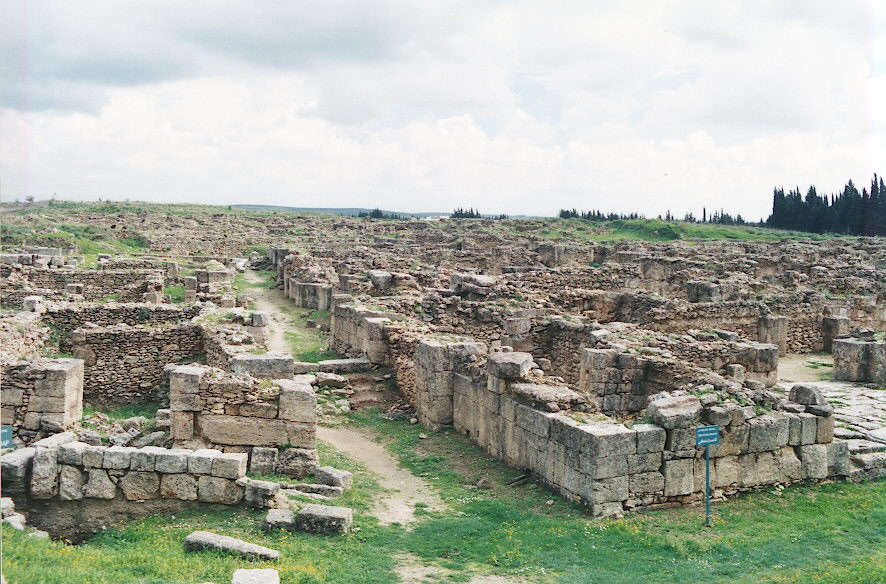HOME / Table of Contents = Civilizations - Cultures - Areas - Regions - Prehistory
Other Archaeological Sites / The Neolithic of the Levant (500 Page Book Online)
Ugarit (Ras Shamra)
 Selected Excerpts on Ugarit
Selected Excerpts on Ugarit
The Neolithic of the Levant
A.M.T. Moore - Oxford University
Neolithic 2: Pages 208 - 210
Near Eastern Archaeology
Volume 63 - December 2000
The Mysteries of Ugarit
2nd-millennium BC Canaanite city at modern Ras Shamra near the Mediterranean coast of Syria. Although securely identified as ancient Ugarit only in the 2nd millennium BC the site was occupied from much earlier and the city overlies a series of earlier Bronze Age, Chalcolithic and Neolithic settlements going back to the 7th millennium BC. The city flourished throughout the 2nd millennium but its heyday was in the 15th to 12th ccnturies when it came first under strong Egyptian influence and then under Hittite dominance. At this stage the town walls enclosed circa 20 hectares.

 Commodious family houses have been excavated and a number of important public buildings including two temples (one dedicated to Baal and the other to Dagon), a priest's library yielding many sacred texts and a palace with a very large archive of administrative and economic documents. From these we know that Ugarit was a major commercial settlement at this time and must have housed a decidely cosmopolitan community. Not only were there tablets in Akkadian cuneiform - the lingua franca of trade throughout the Near East - but others also using the cuneiform script were in the local language Ugaritic and a few others were in Hurrian; some seal impressions are in Hittite hieroglyphics. Moreover the population of Ugarit may be credited with the development of the first true alphabet: simplified cuneiform signs were used for an alphabet of 32 letters probably in the 15th century BC. The city was destroyed in the early 12th century BC, perhaps by the Sea Peoples ..... (AHSFC)
Commodious family houses have been excavated and a number of important public buildings including two temples (one dedicated to Baal and the other to Dagon), a priest's library yielding many sacred texts and a palace with a very large archive of administrative and economic documents. From these we know that Ugarit was a major commercial settlement at this time and must have housed a decidely cosmopolitan community. Not only were there tablets in Akkadian cuneiform - the lingua franca of trade throughout the Near East - but others also using the cuneiform script were in the local language Ugaritic and a few others were in Hurrian; some seal impressions are in Hittite hieroglyphics. Moreover the population of Ugarit may be credited with the development of the first true alphabet: simplified cuneiform signs were used for an alphabet of 32 letters probably in the 15th century BC. The city was destroyed in the early 12th century BC, perhaps by the Sea Peoples ..... (AHSFC)
The History of the Ancient Near East Electronic Compendium

